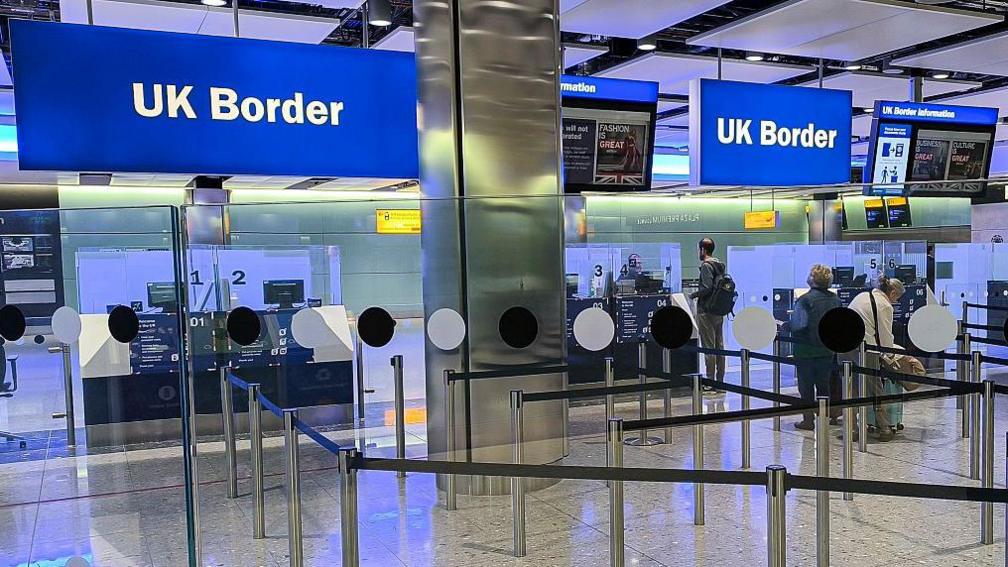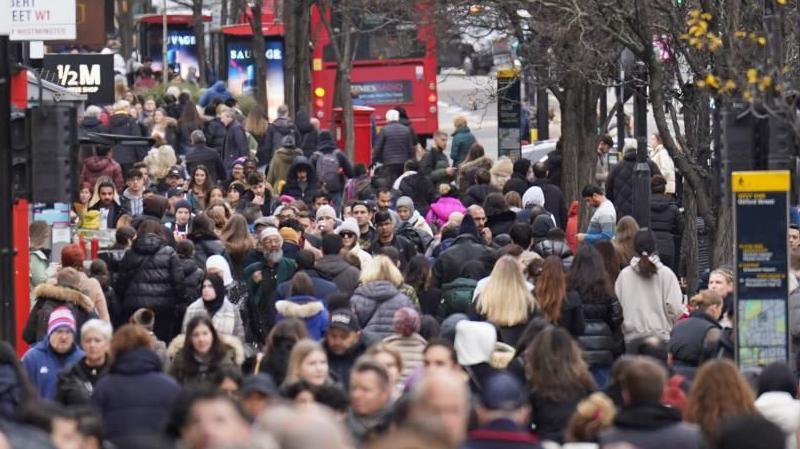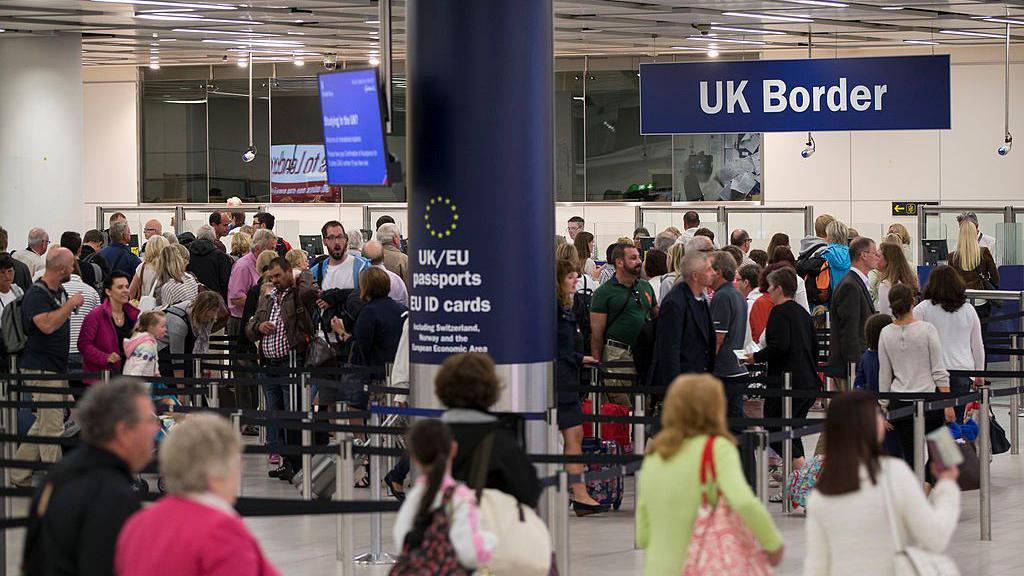UK net migration 20% lower in 2024 than first thought, ONS says

- Published
Net migration to the UK last year was 20% lower than previously thought, according to revised figures from the Office for National Statistics (ONS).
The number, the difference between those entering and leaving the country, has been revised down by 86,000 people and now stands at 345,000 in 2024.
The driving factor behind the change is that more British nationals are thought to have emigrated in 2024 than initially recorded, with 100,000 fewer now thought to be living in the UK.
Migration peaked higher than previously thought, according to the figures, adding 944,000 to the UK population between April 2022 and March 2023. Previous estimates put the number at 906,000 by June 2023.
The new figures make little change to the overall estimate of net migration to the UK between 2021 and 2024, falling slightly from 2.6 million people to 2.5 million in the revised report.
It comes after the government announced new proposals aimed at reforming the asylum system, which include periodic reviews of asylum status and limitations of migrants' rights to claim benefits.

The ONS have been rebuilding the system used to produce official estimates of migration since 2020. Before the pandemic, statisticians asked a small number of passengers at airports and ports about their travel plans and used those responses to work out how many arrivals might be coming to stay.
But the results obtained by this method were "implausibly low" for British nationals, according to Dr Madeleine Sumption, director of the Migration Observatory think tank.
Officials at the ONS said the new figures are based on how often people appear in tax and benefits records, providing a more accurate and active reflection of migrants activities in the UK.
Based on that method, the ONS now thinks that 257,000 British nationals left the UK in 2024 while 143,000 Britons living abroad returned. That means net emigration of Britons - the difference between departures and arrivals - is 114,000 people, rather than its initial estimate of 17,000.
Dr Sumption warns that these figures are "still not final" because they don't measure when someone enters or leaves the country. That can cause problems if someone stays in the country but disappears from tax and welfare data because they're living on savings.
Using that method such a person would usually be counted as an emigrant, skewing migration figures. The ONS has stopped using this method to measure EU migration, instead of using visas and border data shared by the Home Office.
Data obtained under the old system estimated that there were 96,000 fewer EU citizens in the UK by the end of 2024, but the new system has revised that estimate downwards to 69,000.
Why has migration been rising?
Critics have largely attributed the recent increase to changes brought in under Boris Johnson's government from 2021.
The three main factors have been identified as an increase in work visas - particularly in health and social care - an increase in student visas, and the opening of humanitarian routes for people from Ukraine, Hong Kong and Afghanistan.
Small boat crossings have also been rising in that time. So far this year, 39,075 people have crossed the Channel.
Both Conservative and Labour governments have sought to tackle the rising migration figures. Former Prime Minister Rishi Sunak announced restrictions on the rights of students and care workers to bring their families to the UK.
On Monday, Home Secretary Shabana Mahmood announced sweeping changes to the asylum system, which she said was "out of control and unfair".
Speaking in the House of Commons, Mahmood said: "If we fail to deal with this crisis, we will draw more people down a path that starts with anger and ends in hatred."
Related topics
- Published30 July

- Published2 September

- Published21 August
